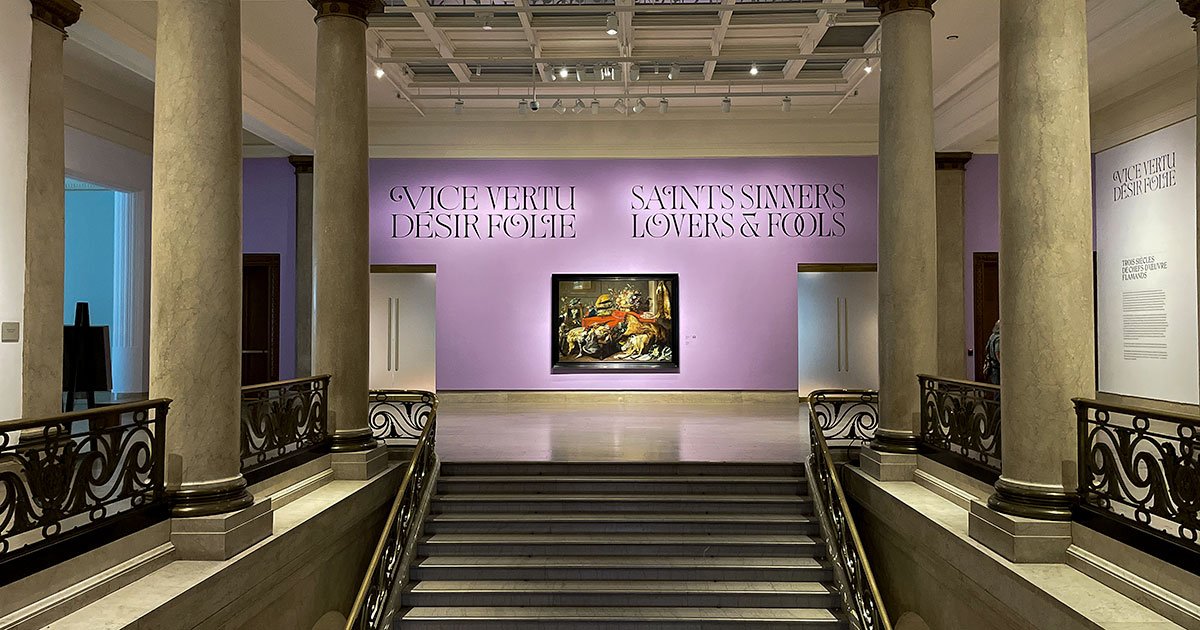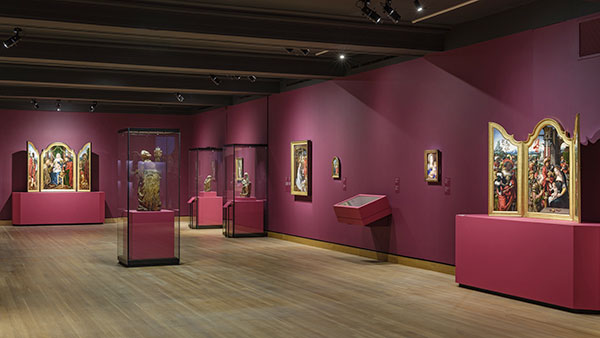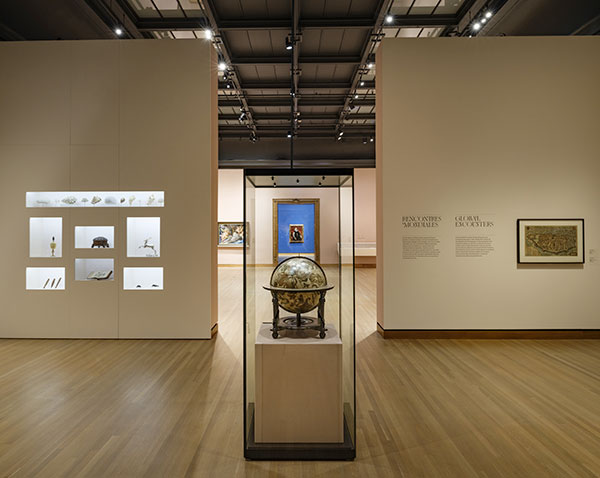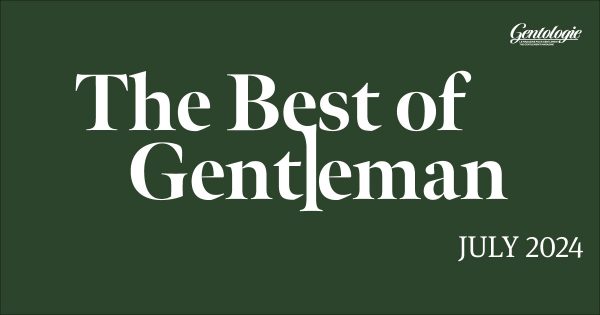Saints, Sinners, Lovers and Fools: Three Hundred Years of Flemish Masterworks at MMFA

Extended until October 20, the Montreal Museum of Fine Arts’ major summer (and autumn) exhibition, Saints, Sinners, Lovers and Fools: Three hundred Years of Flemish Masterworks, featured in The Best of Gentleman for July 2024, is a must see and an excellent suggestion for an activity when colder weather and rain are in the forecast, although even in warmer weather, the Museum’s air-conditioning is welcome. Along the way, you’ll discover impressive, fascinating and, at times, disconcerting works of art.
Saints, Sinners, Lovers and Fools: Three Hundred Years of Flemish Masterworks at MMFA: A Canadian Premiere

Photo: MMFA, Denis Farley
Experience this Flemish adventure, organized by the Phœbus Foundation of Antwerp (Belgium) and the Denver Art Museum, and mounted for the first time in Canada. The Phœbus Foundation’s impressive collection includes masterpieces that reflect a prismatic, up-to-date vision of the human condition.
“The MMFA is honoured to be the first Canadian Museum to present the exceptional collection of Flemish masterworks from The Phoebus Foundation. The first major exhibition that the Museum has devoted to Flemish painting in 10 years, Saints, Sinners, Lovers and Fools brings together some 150 works, including several from the MMFA’s own remarkable collection. These works inspire reflection on the human condition and demonstrate the profound relevance of the past to our present,” says Stéphane Aquin, Director of the MMFA.
In Saints, Sinners, Lovers and Fools, you’ll find themes that have always fascinated mankind, and the exhibition will transport you, dear gentlemen, to the southern Netherlands (known today as Flanders) at a time of social, scientific, economic and artistic boom, when the region’s cities were the epicentre of the planet in these fields (1400–1700).
More on Flanders
What is Flanders? It can be geographically confusing when we talk about the Netherlands and Belgium. According to Wikipedia, the region Belgica Regia, explained in the video above, could refer, under the Ancien Régime, to the whole of the former Spanish Netherlands (this region corresponds today to the present-day Netherlands, Belgium, Luxembourg and part of northern France) or just to the southern part of the region, i.e., the provinces that would eventually form present-day Belgium; this was especially true at the time of the Dukes of Burgundy until Austrian rule. That’s why this exhibition is about Flemish and Belgium, not the Netherlands.
Discover the great masters
The Saints, Sinners, Lovers and Fools exhibition features masterpieces by Hans Memling, Peter Paul Rubens, Anthony van Dyck, Jacob Jordaens and Michaelina Wautier, among many others. The presentation in the Québec metropolis is enhanced by works from the Montreal Museum of Fine Arts’ rich collection of Flemish art.
“We are excited for the next chapter of our Flemish masterpieces at the MMFA. This captivating exhibition is a rollercoaster ride through a rebellious 300 years of Flemish history, guaranteed to captivate a new wave of art enthusiasts!” adds Katharina Van Cauteren, Chief of Staff of The Phoebus Foundation Chancellery.
Saints, Sinners, Lovers and Fools: An Exhibition that takes you on a Journey

Photo: MMFA, Denis Farley
The imposing exhibition divided into no fewer than seven sections featuring almost 150 works, including monumental paintings, sculptures, books, silverware and maps, opens with religious art from the 15th and early 16th centuries, and demonstrates the power and dominance of the clergy in those periods.
When you contemplate works full of symbolism and captivating detail, such as The Nativity by Hans Memling or the Triptych with the Adoration of the Magi by Pieter Coecke van Aelst the Elder, you will understand how the people of Flanders used images to communicate with the divine powers, build their communities and ensure the transmission of their heritage. The dominance of the clergy, as you will have heard in the video above, faded in favour of the citizens and entrepreneurs who wanted to take their place among these classes of citizens.
The next section is devoted to portraits – not always flattering, to be honest – that celebrate the wealth and status of individuals and, by the same token, the advent of patronage. Among the works on display are the Portrait of Archduke Albert of Austria by Peter Paul Rubens, the Double Portrait of Husband and Wife Playing a Game of Tables by Jan Sanders van Hemessen and a work by his daughter, Catharina van Hemessen, entitled Portrait of a Lady. This is followed by a group of paintings depicting madness in a variety of forms and illustrating the ways in which artists used humour both to entertain and to moralise. This work by Frans Verbeeck, The Mocking of Human Follies, where people are feasting instead of putting out the flames attacking the brewery during a large fair, is quite incredible and illustrates the point surprisingly well.
The changes in Flemish society are also clearly visible, while the following sections highlight Flanders’s important role as a cosmopolitan centre of business and a hub of scientific and artistic innovation in the transition to the 17th century, when cities were said to be the New York, Hong Kong and Singapore of today. Maps and navigational tools—remember the importance of the region’s naval armies, which still influence the Dutch shipping industry today—sit alongside masterpieces by world-renowned artists such as Rubens and van Dyck, whose dramatic pictorial styles struck a chord with a society affected by war and political instability.
At the end of the exhibition, an immersive space is inspired by the art cabinets, prestigious collections found in the homes of the bourgeoisie at the time, also known as the Cabinets of Curiosities. These cabinets, often represented in paintings, some of which are shown in Saint, Sinner, Lovers and Fools, are to some extent the premise of today’s museums, prompting reflection on the desires—to understand, to marvel and to possess—that led to their creation.
“Presented first in Denver and then in Dallas, this show offers deeper insight into the different areas of Flemish art and deals with universal timeless themes. Flanders, this small but mighty society, was seeking to establish itself in a fast-changing, increasingly globalized world. Art played a crucial role in this, and it’s fascinating to see that the legacy of this period persists today,” says Chloé M. Pelletier, Curator of European Art (before 1800) at the MMFA.
Want to find out more? Pick up the huge, richly illustrated 432-page book edited by Katharina Van Cauteren, Director of the Chancellery of the Phœbus Foundation. Entitled From Memling to Rubens: The Golden Age of Flanders, the publication, available in French and English, offers an in-depth exploration of Flemish art. Jewels from the Fondation Phœbus collection, little-known masterpieces by Hans Memling, Quinten Metsys, Pierre Paul Rubens and Antoine van Dyck, among others, will immerse you in this magnificent exhibition.
Saints, Sinners, Lovers and Fools: Star of the Museum Ball
And on October 26, the 64th edition of the Montreal Museum of Fine Arts Ball will be held under the theme of the same major exhibition Saints, Sinners, Lovers and Fools: Three Hundred Years of Flemish Masterworks. If you’re looking for a dinner jacket/tuxedo for this event, read our article.
Gentologie strongly suggests that a gentleman does not take photos/videos of the works in a museum and visits in silence; otherwise the atmosphere quickly becomes cacophonous and disturbing for other visitors.
Until October 20, 2024 – Extended until October 25.
MONTREAL MUSEUM OF FINE ARTS
Main entrance: Jean-Noël Desmarais pavilion
1380 Rue Sherbrooke Ouest, Montreal
514-285-2000
Schedule:
- Monday — Closed
- Tuesday — 10 h to 17 h
- Wednesday — 10 h to 21 h
- Thursday — 10 h to 17 h
- Friday — 10 h to 17 h
- Saturday — 10 h to 17 h
- Sunday — 10 h to 17 h
Enjoy your visit!




